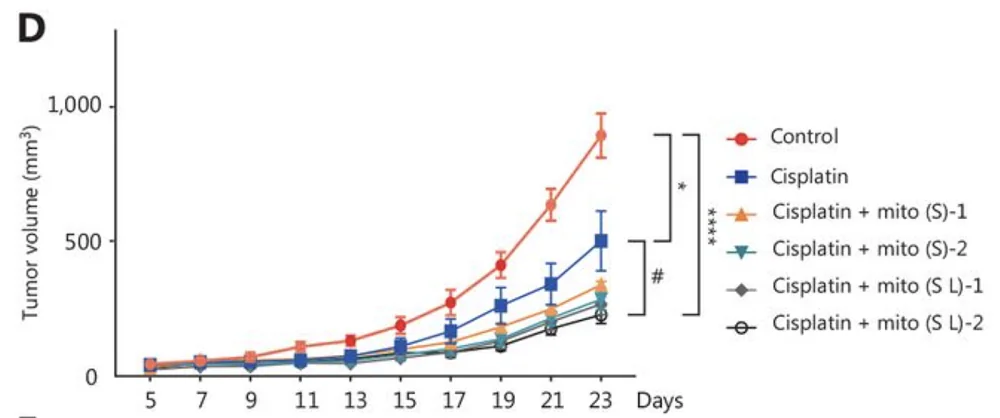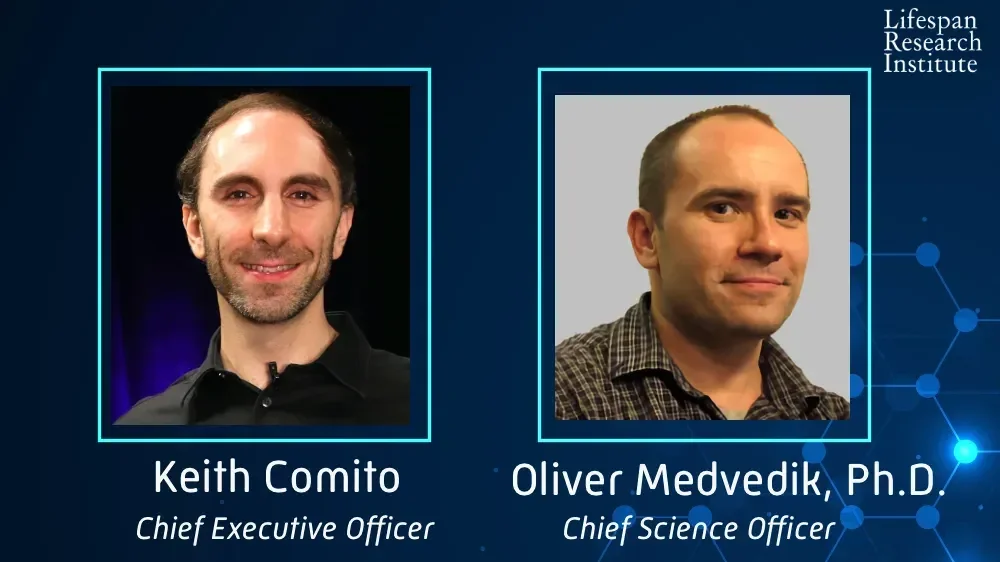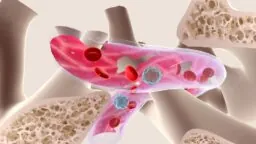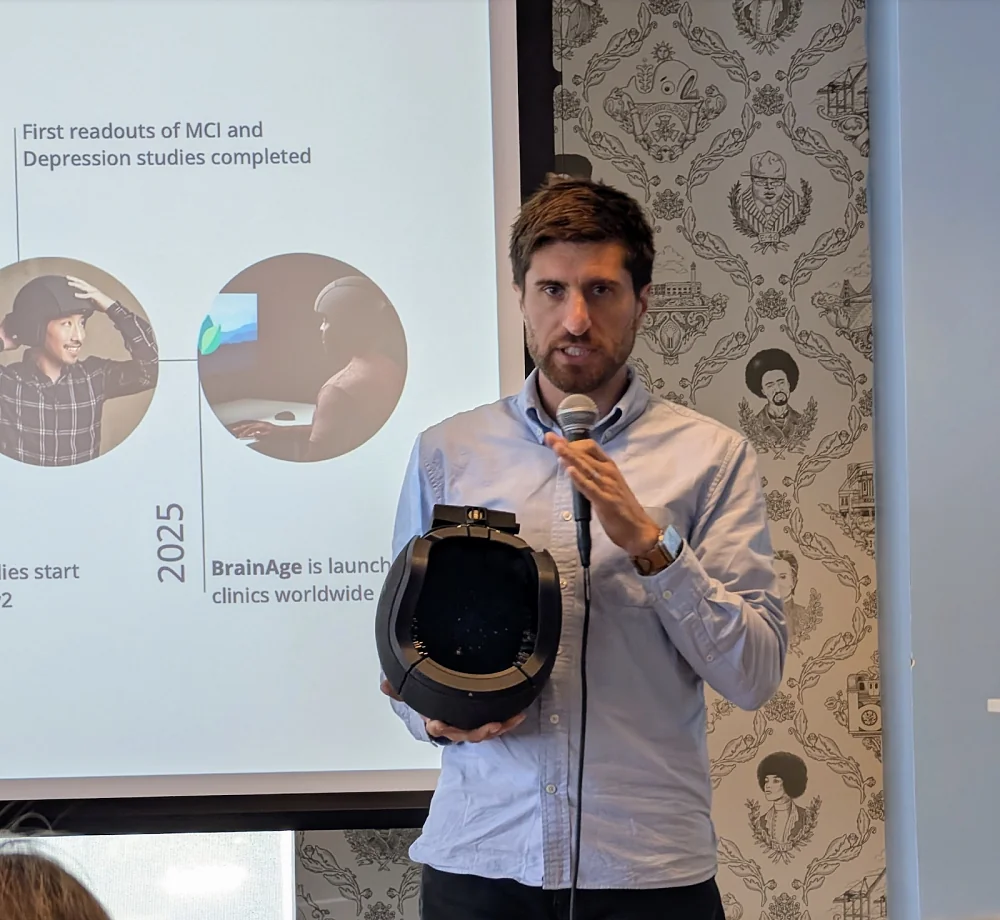Nir Barzilai: “Positive Evidence for Metformin is Mounting”
Dr. Nir Barzilai, the director of the Institute for Aging Research at the Albert Einstein College of Medicine, among his many other titles, is one of geroscience’s most prominent figures. He is everywhere all at once, seemingly collaborating with the entire world, but is best known as a staunch proponent of metformin, the anti-diabetes drug that extends healthspan and lifespan in animal models and maybe in humans, as well as for his fascinating research into centenarians. Recently, a review paper came out that questions metformin’s reputation as a geroprotector. We thought it was the perfect moment to reach out to Dr. Barzilai for an update on his faith in metformin, the long-awaited Targeting Aging with Metformin (TAME) trial, and other exciting topics.
Let’s start with the recent metformin paper that intends to pour some cold water on the idea that metformin is a good gerotherapeutic.
There are 34,731 papers about metformin, which has been around for decades, and most of them are good; the positive evidence is accumulating. The authors of this one decided to talk about the “bad” papers, because the fact that metformin has clinically proven benefits beyond just diabetes is well known.
Metformin didn’t start as an anti-diabetic drug. In the 1950s, this extract of the French lilac was used for osteoarthritis, to prevent flu, and for a variety of remedies when it was noticed that it also lowers glucose. When they gave it to people with diabetes, they said, “Hey, what’s going on? It’s doing other things”. Aging is where it started and where it’s going.
When I do a “metformin and aging” search in PubMed, there are 1,400 papers on that, and the majority are good. In just the last year, there are 111, most of which are good, and they were not quoted in this recent paper. The reason this was brought up is because of an effort by Christensen to look at people who took metformin for diabetes in Denmark. It wasn’t a clinical study; it was just looking at data.
There’s a problem with this approach: the data showed that metformin decreased mortality initially, but not later on. But of course! When it decreases mortality initially, the people who would have died have now passed, and the people who gained lifespan will eventually match the plot. That’s a time-to-event bias. He didn’t talk about this part; he just said at the end, “We didn’t show an effect”.
This Danish study came after another foundational study from the UK, which was also observational and showed that people on metformin not only have half the mortality of people on other drugs, which is true and is good data, but they also had less mortality than people without diabetes.
Let’s explain to our readers that you’re talking about two influential populational studies of metformin. One, from a few years ago, reinforced metformin’s reputation as a gerotherapeutic, and then, a couple of years ago, another study with a somewhat comparable design came out and, according to some opinions, refuted the first one.
“Refute” is not the right word. One study was done in England, the other in Denmark. One of the differences is that the obesity rate in England is 20%, while in Denmark, it’s 5%. Obesity is one of the main reasons people are prescribed metformin in England. So, we are not talking about the same population, and it hasn’t been done the same way. I accept that you can do different studies around the world, but my point is that those were two flawed observational studies, and there are better studies out there.
The most important study that connects metformin with aging is the one that showed that if you give it during COVID, you slash mortality and the rate of long COVID in half. The critics say, “Okay, but this study didn’t reach its primary endpoint”. Their primary endpoint was hypoxia. It’s silly! It’s just a stupid endpoint because metformin isn’t working on hypoxia; it’s working on inflammation, on immunity, on the ability of the body to resist.
So, who cares? You can take any study in the world and find its limitations. That’s our profession. In every journal club, an outsider would think every paper is a bad paper. But no, every paper has some limitations, and we accept a certain idea only when data accumulates. My point is that there’s so much data on metformin. The authors of this new paper include references to all the good studies; they’re just not talking about them.
Then they do another thing that doesn’t make sense: they take the DPP, the Diabetes Prevention Program. The DPP study was concluded around the year 2000. It’s a study where you take non-diabetics who are at risk of diabetes.
Yes, it was basically a prevention study.
Exactly. And they stopped the study after four years, though it was planned for five, because both metformin and lifestyle changes clearly prevented diabetes. If people say metformin was never given to non-diabetics, that’s wrong; it was. In fact, more metformin is probably given to non-diabetics now than to diabetics.
Anyway, the study ended at four years, and the participants were followed up, but what happened? The study found that metformin was good for you, so some people in the control group started taking it. The study also said healthy lifestyle changes were good for you, so some people changed their lifestyle. Conversely, some people who were on metformin stopped taking it, and some people who were on a lifestyle plan stopped doing it. Moving forward, it wasn’t a clinical study anymore; it became an observational study, and they didn’t find much. It’s just another example of a study where all the groups have changed and mixed. To make such a big story about the DPP is ridiculous.
They’re saying this is “emerging” evidence, but it’s not. They’re just taking three studies that are not RCTs [randomized controlled studies]. Then there’s the monkey study published in Cell, which was a big deal. Aging was delayed by eight years on the transcriptomic level. There are so many other good studies on metformin.
Another thing, regarding Rich Miller from the ITP [Interventions Testing Program]. Rich believes that whatever doesn’t work in his animals doesn’t work in humans, but this is the opposite situation! The drug already showed effects in humans. What are you defending? What are you trying to say?
I guess he’s trying to say that we don’t see a lifespan effect in mice, and we also don’t have definitive lifespan data in humans.
But that is wrong. There is a lifespan effect in mice, just not as much as with rapamycin. It’s been recorded by 20-something studies, but Rich ignored something from his own ITP data. They’re missing a very important point: metformin is not for young people; it’s only for old people.
This relates to the antagonistic pleiotropy hypothesis of aging, where not everything that’s good for you when you’re young is good for you when you’re old, and it’s the other way around with drugs. Not every drug for aging is good for the young, and metformin is a perfect example. Whoever takes metformin who doesn’t have diabetes and is not at least 50 years old is making a mistake, in particular if they’re trying to build their muscle or increase their VO2max.
I’m saying this because there’s a new study from the ITP, which re-analyzes their own data and shows that metformin wasn’t good in the first half of the animals’ lives but performed significantly better in the second half of life.
There is also the time-bias issue. For example, there was a paper from China claiming metformin is associated with more Alzheimer’s. Usually, it’s the opposite, but this is what happens: if metformin prevents your mortality in an observational study, you are pushing the endpoint. People might get Alzheimer’s later. There’s a paper coming out in the Journal of Gerontology showing that people on metformin are twice as likely to reach age 90 as other people with diabetes, but if you give metformin and you have decreased mortality, it can look like metformin is bad later on.
You’re saying that if a drug prolongs lifespan, the survivors are actually more likely to eventually get Alzheimer’s simply because they are older, correct?
Right. And that makes a lot of sense.
To summarize, you’re still bullish on metformin. This brings us to the TAME trial, which was designed to answer questions about delaying aging in humans. Can you give me an update on where things stand?
TAME is designed to measure a cluster of outcomes; it doesn’t look at mortality independently. The primary endpoint is a cluster of cardiovascular disease, cognitive decline, cancer, and then mortality. So, you’re not going to get a single mortality number out of it.
Yes, I think TAME’s design is pretty ingenious: a cluster of age-related diseases serving as a proxy for aging. We are all rooting for TAME. What’s happening with it now?
Let me give you a nice update. To call something a “gerotherapeutic” from a preclinical perspective, you have to show that it hits the hallmarks of aging. By the way, metformin hits more hallmarks of aging than any other drug; rapamycin comes close, but metformin is broader.
You also want to show that your animals live healthier and longer. Clinically, you want a placebo-controlled study where you give the drug for months or years and show that although it was given for one purpose, it delayed several other age-related outcomes and decreased overall mortality. I would say that evidence is enough to call something a gerotherapeutic, particularly if it’s already FDA-approved.
It’s important to see what’s happening with SGLT2 inhibitors. These drugs were developed for diabetes, but now we have studies in non-diabetic populations with moderate renal failure. In a study of 4,000 people over three years, their primary endpoints – renal-specific, cardiovascular-specific, and all-cause mortality – were all significantly decreased by 30-40%.
In the same vein, metformin has already been repurposed for many things, just not formally by the FDA. It’s the first line of choice for PCOS, pre-diabetes, COVID, and macular degeneration. Each of these is a different disease, which shows metformin is doing something to several hallmarks, not just metabolism.
That’s a great point about the breadth of the effect. On the other hand, there’s this idea I’ve heard from many people that with all our gerotherapeutics, we are kind of running in circles around the same few pathways that control the trade-off between growth and repair. What do you say to that?
I think it’s almost the opposite. The reason we started arguing about these drugs is because somebody would say, “No, this is not only about metabolism, it does something to the immune system or to mitochondrial function”. The point is the hallmarks of aging are all associated with each other. If you target one hallmark, you’re going to affect the others, and that is the confusion. When you treat aging, you affect many things, which made us argue about the primary mechanism until we understood the hallmarks.
Metformin, from a mechanistic perspective, is doing two main things. On one hand, it has the metabolic pathway effects: activating AMPK, decreasing mTOR, and improving insulin sensitivity by blocking complex I in the mitochondria. The second thing that happens, because it blocks that complex, is there’s less oxidative stress. Because of less oxidative stress, other things happen with inflammation, senescence, and genetic instability. This is why metformin’s effects are quite global.
I want to circle back to TAME because people are very interested in it.
I cannot give you a perfect update because it’s now being handled within ARPA-H. I think there will be two major trials that come out of this. One is going to be from Eli Lilly; they’re going to do a TAME-like study but with their GLP-1 agonist. There are negotiations with the FDA about what they need to show. The investigators might want to add some resilience measurements, but I think the FDA is very determined to see if it affects diseases. This conversation is ongoing, and we’re holding everything because I would love for all four major drug classes to be tested so we can get comparisons.
I’d imagine the TAME design is generalizable, and it would indeed make a lot of sense to test GLP-1 agonists, the rising stars, in the same manner.
Yes. This administration is very good for aging research, and the FDA is engaged. The most important thing about TAME is that it’s a template for the pharmaceutical industry, and that’s probably why Lilly is interested. They see the effect on aging, and they’re saying, “Let’s just do the whole thing and get an indication for aging”.
When you say, “the whole thing,” you mean applying the TAME framework of a cluster of diseases to GLP-1 agonists?
Exactly, and they probably only need 2,000 people to show an effect, but that’s why metformin is so important. Longevity doctors have already adopted it, and it’s the cheapest drug in the formulary. We want to democratize aging, and the best way to do that is to have metformin out there. 90% of the people who should be on it will benefit, and it’s affordable. Healthcare providers will immediately see in the next two years that their healthcare expenses have decreased. Metformin might be more effective than other drugs, but I wouldn’t know unless it’s a head-to-head trial.
Once you do the calculation of the diseases prevented, you’ll be able to afford much more expensive drugs. We calculated that even at its current price, a GLP-1 agonist would be a cost-saving measure for a healthcare provider. They’ll see less Alzheimer’s, fewer strokes, less cardiovascular disease, less kidney failure. It will be so cost-effective that it’s worth the price, and the price will eventually get cheaper.
Let’s switch gears. You’re still doing your centenarian studies. Any interesting findings in the last few years?
I think the most interesting thing is that 60% of our centenarians have functional mutations that decrease the actions of growth hormone. There are many mechanisms, maybe 50 ways to get there, but the IGF-1 pathway is a really good one to target. We actually took a drug that was developed to fight cancer by inhibiting the IGF-1 receptor, gave it to animals, and not only did they live longer, but they also lived much, much healthier. We went from centenarians back to animals with a drug that has already been in humans.
Another thing I’m most excited about goes back to biomarkers. We took proteomic data, measuring 5,000 proteins in a thousand people, and 500 of them were the children of centenarians. They were, on average, eight years younger on a proteomic level than their spouses, but that’s not even the most exciting thing. A lot of those differentiating proteins are related to breakdown of tissues, collagen, and other things. With Tony Wyss-Coray, we’re trying to find which of those 5,000 proteins are specific to certain organs. They could come only from the liver or only from the brain.
We covered that paper last year. It was amazing.
We are continuing with that because we have, for example, people who are “slow agers”. Their proteome says they are younger than their age, but their liver is older than their age. What’s going on? Are they alcoholic? Do they have cancer, or maybe their brain is older? We think in the future, it’s not just about the overall biomarker, but you could find your weakness and go there first. If it’s your kidney, maybe metformin is the best drug for you. If it’s your brain, maybe it’s a GLP-1 agonist.
I just had this thought: what if some centenarians age more uniformly? What if they don’t have those weak spots, and all their organs age more or less simultaneously? That could explain some of their longevity.
That’s a good question. When we look at the children of centenarians versus controls, it looks more like their overall age is lower, rather than them having a specific decrease in unbalanced organs, but they do have a decreased incidence generally. I think it’s a good thought; I would look at it some more. We don’t really do proteomics on centenarians because they are at the end of their lives. That’s why we study their children; we’re interested in their genes. For the centenarians, 30% of them will die in the next year. Maybe the phenotype predicts their demise, or maybe it’s what brought them here, but it’s very hard to deal with.
Of course, you don’t know someone is a future centenarian before they become one, so working with their children is a great approach. Just one last question. How satisfied are you with how things have been going in the longevity field for the past four years since our last interview? Are you excited about where the field is today?
Yes. As the president of the Academy for Health & Lifespan Research, I can say that on one hand, we are so excited about the future and the progress we’re making. We are already telling doctors that there are safe drugs to think about for aging. I gave the keynote at the American Association of Physicians, and people are accepting this premise.
While we’re excited about the research, there’s also a lot of noise growing up in parallel. Sometimes, the noise is even worse than the real progress, and we’re trying to balance that. Without the noise, maybe nobody would have noticed us, but there is noise. One important thing we identified is that although we all have the same mission, we are not using the same terms. If you say “rejuvenation”, it means different things to different people. “Regeneration”, “healthspan”, “longevity”, “anti-aging”, “gerontology”, “geriatrics” – we have lots of terms.
Several organizations hired a rebranding company. They did a lot of work, interviewed people, did studies, and tested things on thousands of people. They came up with a plan based on the fact that if “anti-aging” is our enemy, the best word for us to use is “geroscience”. Why? Because we need the word “science”. To be clear, “geroscience” itself is not the best term for the public, but the plan is to use “geroscience” with something else, depending on the stakeholders, whether we’re talking to lay people, scientists, politicians, or pharma.
We have a roadmap of how we are going to present ourselves and launch a campaign. Although “geroscience” didn’t pick up on its own, with the right marketing, it can become really important and distinguish us from the noise. This is going to be a campaign that hopefully will make us look new, exciting, and innovative.





































